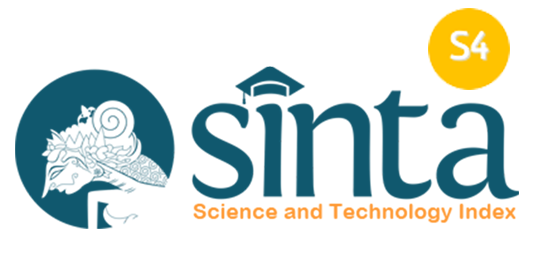Organization and Work Relationship Patterns of Fishers used Boat Lift Nets in Ballang Lompo Island, South Sulawesi
DOI:
https://doi.org/10.20956/jipsp.v9i1.20875Keywords:
Organization, Patterns of Employment, Island Fishermen, lift net, TraditionsAbstract
This study aims to analyze the organization and working relationship of boat lift net fishers, the recruitment system for group members, the form and nature of the employment relationship, and the wage system in fisherman working groups. The research method is qualitative, and the research type is descriptive. Purposefully, the research location was chosen by the defined research challenge. In-depth interviews and observation participation will be used to acquire qualitative data. In this study, data processing and analysis were carried out simultaneously in a process that was carried out continuously since data collection was carried out, especially in organizing, selecting, and categorizing data in the form of narrative descriptions or thick descriptions. The study results indicate that the organization and working relationship of fishers who use lift-net fishing gear on Balang Lompo Island still use local rules that live in the community. These rules regulate cooperative relationships between Ponggawa (owner of production equipment), Ponggawa sea (leader of production activities), and Sawi (workers/subordinates). For the Sawi greens recruitment system, kinship and neighborhood factors are still the main factors compared to other factors. The profit-sharing system applied is one of the local rules inherent in the fishery process. Ritual practices associated with belief in the fishing community on this island are codes of conduct that become rules that are still maintained while making adjustments along with the times.
References
Andryani, A. K. (2018). Modal sosial pada masyarakat nelayan pa’bagan di Desa Bontosunggu Kabupaten Kepulauan Selayar. Universitas Negeri Makassar.
Arief, A. A. (2021). Nelayan Pulau Kecil dan Kapitalisme. Yogyakarta: Deepublish.
Arief, A. A. (2007). Artikulasi Modernisasi dan Dinamika Formasi Sosial Pada Nelayan Kepulauan di Sulawesi Selatan (Studi Kasus Nelayan Pulau Kambuno). Penelitian Disertasi (Tidak Dipublikasikan).
Arief, Andi Adri, Agusanty, H., and Mustafa, M. D. (2021). Kepercayaan dan Pamali Nelayan Pulau Kambuno di Sulawesi Selatan. Satwika: Kajian Ilmu Budaya Dan Perubahan Sosial, 5(1), 56–68.
Arief, Andi Adri, and Agusanty, Harnita. (2021). Nelayan Suatu Tinjauan Sosiologi Ekonomi. Yogyakarta: Deepublish.
Arief, Andi Adri, and Haeruddin, H. (2015). Pengaruh Modal Sosial Terhadap Kinerja Kelompok Usaha Perikanan Tangkap Di Kabupaten Sinjai (Studi Kasus Kelurahan Lappa, Kecamatan Sinjai Utara). Jurnal IPTEKS Pemanfaatan Sumberdaya Perikanan, 2 (4).
Arief, Andi Adri, Fachry, M. E., Agustina, H., and Mustafa, M. D. (2015). Identification and Analysis of Social Capitalin Flying Fish Fishermen Group for Coastal Community Development in Takalar Regency (Case Study Bontomarannu Village, South Galesong District). Journal of Fisheries International, 10(1), 1–5.
Bavinck, M. (1984). Small Fry: The Economic of Petty Fishermen in Northern Sri Lanka. VU Uitgeverij/Free University Press. Amsterdam.
Betke, F. (1985). Modernization and Sosioeconomic Change in The Coastal Marine Fisheries of Java: Some Hypothese. Working Paper No. 74. Sociology or Development Research Centre. University Bieleveld Germany.
Birowo, A., Willam L. Collier. (1975). Emplyment and Income in Coastal Villages on The North Coast of Java. Majalah Ilmu-Ilmu Sosial Indonesia Vol. 2: 163187.Firzan, M. (2017). Hubungan Patron-Klien Masyarakat Nelayan di Kampung Tanjung Limau Kelurahan Gunung Elai Kecamatan Bontang Utara Kota Bontang. EJournal Sosiatri-Sosiologi.
Chan Ling Yap. 1975. Inflasi, dasar kewangan, dan dasar belanjawan. Penerbit Universiti Malaya. 134 halaman Legiyo, L., Agustang, A., and Hakim, M. (2018). Relasi Punggawa dan Sawi pada Bagan Perahu (Studi Kasus Nelayan di Pulau Balang Lompo Kabupaten Pangkep). Universitas Negeri Makassar.
Firth, R. (1966). Malay Fishermen: Their Peasant Economy. W. W. Norton & Company Inc. New York.
Jordan, R. E. and Anke Niehof (1982) Patondu Revisited: A Case Study of Modernization in Fishery. Review of Indonesia and Malayan Affairs, Vol. 16 No. 2: 83-108.
Lekatompessy, H. S. (2013). Strategi Adaptasi Nelayan Pulau-Pulau Kecil terhadap Perubahan Ekologis (Studi Kasus Pulau Badi dan Pajenekang, Kabupaten Pangkep). Universitas Hasanuddin.
Mira, M. (2017). Keunggulan sub sektor perikanan dan pariwisata bahari dalam struktur perekonomian wilayah pulau-pulau kecil. Jurnal Sosial Ekonomi Kelautan dan Perikanan, 8(2), 145–156.
Mubyarto, L. S. and Michael D. (1984). Nelayan dan Kemiskinan: Studi Ekonomi Antropologi di dua Desa Pantai. Jakarta: CV. Rajawali.
Retnowati, E. (2011). Nelayan Indonesia dalam pusaran kemiskinan struktural (perspektif sosial, ekonomi dan hukum). Perspektif, 16(3), 149–159.
Wahyuni, E. S., Satria, A., and Kusumastanto, T. (2014). Transformasi pranata patronase masyarakat nelayan: dari ekonomi moralitas menuju ekonomi pasar. KOMUNITAS: International Journal of Indonesian Society and Culture, 6(1), 116–135.
Downloads
Published
How to Cite
Issue
Section
License
Copyright (c) 2022 Jurnal IPTEKS Pemanfaatan Sumberdaya Perikanan

This work is licensed under a Creative Commons Attribution 4.0 International License.














